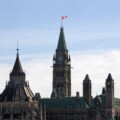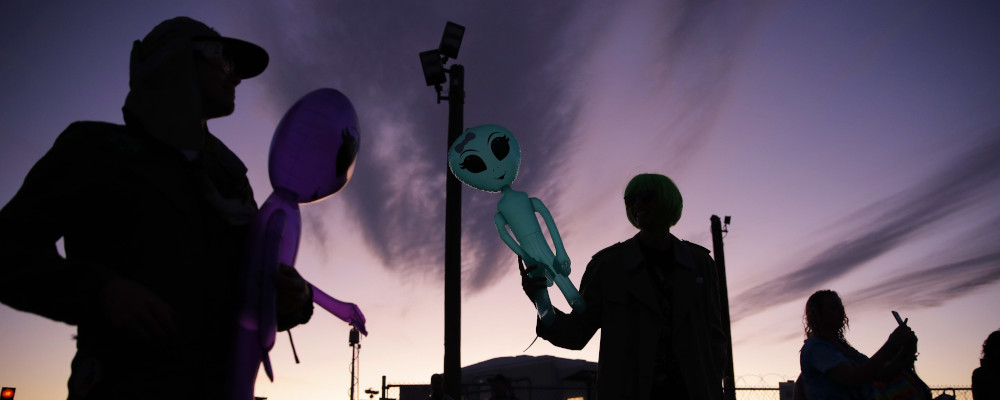The Hub’s readers can be forgiven for not anticipating that a major storyline of 2021 would be growing political momentum and interest in the idea of UFOs. It probably would have seemed too strange even for such an unconventional year.
But with U.S. Office of the Director of National Intelligence scheduled to deliver an unclassified report to Congress next month, air force pilots, former intelligence directors, elected officials, and even former President Barack Obama are increasingly communicating that “unidentified aerial phenomena” are indeed real and may represent some sort of “serious threat.”
On a certain level, such ideas and arguments can be disruptive for the highly-rationalistic mind. One even gets the sense in reading the analysis and listening to interviews that those in authority who’ve come to accept that there’s something unidentified and unexplained happening here seem almost agonized by their conclusions.
The modern mind has been trained to be skeptical about mystery and the supernatural. We want to be able to rationalize any and all developments as merely inductive expressions of the natural world. There is, as Florida Senator Marco Rubio has observed, a sort of “stigma” attached to asking questions about UFOs in the U.S. Senate in particular and the modern public square in general.
This apprehensiveness is linked in large part to modern metaphysics. In our secular, rationalist age, we’ve come to elevate reason and science to an almost dogmatic status that doesn’t leave much room for uncertainty or weirdness. Former Governor General Julie Payette’s controversial 2017 remarks in which she dismissively rejected any divine role in the origins of the universe is a good (or bad) example of this prevailing orthodoxy. Her overconfidence that it was all just a “random process” inadvertently reflected the same faith-like assumption that she was ostensibly deriding.
In this sense, the existence of UFOs challenges our basic precepts about how to think about and understand the world. That well-trained, U.S. military pilots have been confronted by such unidentified aerial phenomena not only confounds human knowledge but also our faith in advanced technologies. There’s something humbling about the idea that the American military, which currently spends more than the next 10-largest militaries combined, cannot figure out what’s been seen flying in its air space on a regular basis for several years.
In the absence of progress in the search for extra-terrestrial civilizations, we’ve come to lose our sense of wonder.
Yet, on the other hand, there’s something inherently rational about the presumption that we’re not the only ones in the observable universe. The sheer age and vastness of our galaxy and universe would suggest a high probability that there must be intelligent life somewhere else out there even if we haven’t found it. It seems a bit arrogant (and indeed a leap of Payetteian faith) to think that the Earth is the only planet among billions with the right mix of conditions needed to support life.
Fermi’s Paradox, named after twentieth-century Italian physicist Enrico Fermi, has brought expression to this apparent contradiction between the large-scale potential for extra-terrestrial civilizations and the lack of evidence of their existence. As he once apocryphally asked: “Where is everybody?”
There are various explanations for the cosmic silence ranging from there was never any other intelligence life besides us, to it destroyed itself in some cataclysmic event, and virtually everything in between. One thing is clear though: In the absence of evidence or progress in the search for extra-terrestrial civilizations, we’ve come to lose the sense of imagination and wonder of Fermi’s age.
There’s a sense at least among political and cultural elites that these questions are unworthy of our collective attention and instead should be marginalized so as to focus on the self-gratifying priorities of the here and now. As Harvard astronomer Avi Loeb explained in a recent Munk Debate: “the public is extremely interested in this subject [and yet] the scientific community shoves it to the sidelines and ridicules anyone that discusses the opportunity to learn about the broader environment.”
This may explain how the renewed speculation about UFOs might be characterized as both rational and irrational at the same time. We’ve so given up on the prospect of intelligent life elsewhere in the universe as a collective pursuit that we’ve come to treat any discussion or debate about the subject as necessarily outside the mainstream. It’s become grouped with other conspiracy theories as opposed to being viewed as an ongoing, highly-sophisticated process of scientific exploration and evidence collection about our galaxy and universe.
One gets the sense though that this may be changing. The growing normalization of UFO speculation began in earnest about a year ago when the Pentagon officially released three short videos of what appear to be unidentified flying objects rapidly moving while recorded by infrared cameras. The U.S. Navy’s official position is that it cannot explain the objects depicted in the videos — they remain characterized as “unidentified.”
A recent 60 Minutes expose on the subject, which contained various claims and insights from current and former military officials including that air force sightings of anomalous aerial vehicles are commonplace, has heightened attention to the forthcoming congressional report and what it may tell us about these developments.
As a result, the question of UFOs has suddenly become a big political issue. Elite voices who generally tend to be more skeptical on these issues are now giving it more attention. Former President Obama, for instance, recently described these questions as “not easily explainable” and emphasized the need to “investigate and figure out what that [in the videos] is.”
He is far from alone. The recent videos have bolstered a growing chorus of government officials, including a bipartisan group of former intelligence heads such as James Woolsey, John Brennan and John Ratcliffe, to call for further investigation of these issues.
There has been less attention and interest to the question of UFOs among Canadian policymakers. But that doesn’t mean the Canadian public isn’t interested. Research and polling indicate that Canadians are indeed open to the possibility that we’re not alone in the universe.
A 2016 poll by the Angus Reid Institute, for instance, found that four out of five Canadians believe that there’s “probably” or “definitely” intelligent life elsewhere in the universe. Nearly half even think that it’s “probably” or “definitely” true that extra-terrestrial beings have visited Earth.
Canadians also commonly report sightings of UFOs. Data from Canadian astronomer Chris Rutkowski, for instance, shows that UFO sightings across Canada increased by 46 percent in 2020. The total of 1,243 sightings — one of the highest recorded in a single year — amounts to three per day.
Although most of these cases have been explained by common phenomenon such as airplanes or satellites, Rutkowski, who is himself skeptical that these objects are being operated by starfaring species, observes that 13 percent remain unexplained.
It’s important to recognize that just because these flying objects are unidentified or unexplained doesn’t tell us much. As National Review journalist Jim Geraghty recently observed, there are various possible explanations including that they’re secret technology from the U.S. military, private companies or an unfriendly country. UFOs and aliens are not necessarily synonymous.
It’s also true though that the existence of UFOs holds out the potential however miniscule that there may indeed be intelligence life somewhere else out there. We may not be alone after all.
Next month’s report to Congress should shed more light on these questions. But even if it doesn’t it still seems like a sign of civilizational health that we keep asking them. Modern society could benefit from less intellectual stigma and more deep thinking about the mysteries of the universe and our place in it. This has historically been a great source of imagination and wonder — both of which are in alarmingly short supply these days.
So we should look once again to cosmos and ask the question: are we alone in the universe? No matter the answer, the search itself can be a useful source of hope and meaning in an era of aimlessness and cynicism.
Recommended for You
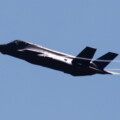
J.L. Granatstein: Should Canada scrap the NORAD agreement?
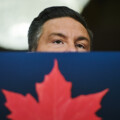
Alister Campbell: The last time ‘Common Sense’ lost, and where Poilievre can go from here
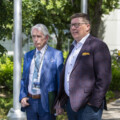
‘Now is the perfect opportunity’: What’s the value of the social sciences and humanities in Canada today?
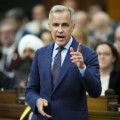
Darrell Bricker: The House returns—and the tests begin
